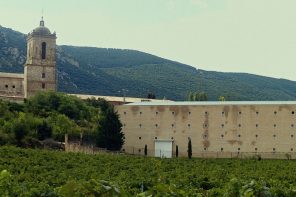When it comes to the Old World, certain countries get all the fame. France, Italy, Spain – the list goes on. But what about the Iberian peninsula’s ‘other’ viticultural hotbed? As much as we love the wines of Spain, more often than not, Portugal gets lost in the darkness of its larger neighbor’s shadows. When it comes to Portugal, the viticultural possibilities are endless; with 14 designated regions, an array of winemaking styles, and an even larger amount of indigenous grape varieties, there’s really not much that Portugal doesn’t do. This week, we’re focusing on the country’s most highly regarded appellation: Douro.
Historically, winemaking has been a thing in the Douro since the third century, though the region really began taking off about 1400 years later, when the region’s fortified wines became well beloved in England.
Port became a staple in the Brits’ drinking regime, skyrocketing the economy of Portugal as a whole. The region, like most of Europe, fell victim to phylloxera in the mid-1860s, killing off precious amounts of grape vines. Though, like most European viticultural regions, the appellation was able to recover in due time.
Visually speaking, the Douro is one of the most stunning viticultural regions in the entire world. Steep hills slathered with vines line the banks of the snaking Douro river, creating a viticultural hotbed for some of the country’s most interesting grape varieties.
Geographically speaking, the region is broken into three large sections: Baixo Corgo, Cima Corgo and Douro Superior. Baixo Corgo has the most moderate climate, as well as the highest rainfall. Cima Corgo is the biggest of the three, and where most of the major wineries are found. Douro Superior is the hottest and driest of them all, spanning just shy of the Spanish border. As of 2001, the region was impressively named a World Heritage Site.
The Douro experiences a Mediterranean climate, with hot summers and chilly winters. Soil types vary throughout the appellation, with schist-ier soils dominating the vineyards destined for Port production, and more granitic soils producing fruit for drier table wines.
The Douro’s most popular red varieties are Touriga Nacional, Touriga Francesca, Tinta Roriz (otherwise known as Tempranillo), Tinta Barroca and Tinta Cao. White grapes aren’t nearly as common, though Gouveio and Malvasia Fina are arguably the most widely found.
And while fortified Port wines are the region’s claim to fame, there is also a strong presence of quality dry wines coming out of the region. Warm temperatures and abundant sunshine allow grapes to optimally ripen, giving way to full-bodied, powerful cuvées. Whether dessert or dry is what you’re craving, the Douro definitely has a bottle of full-bodied red to satisfy it.








